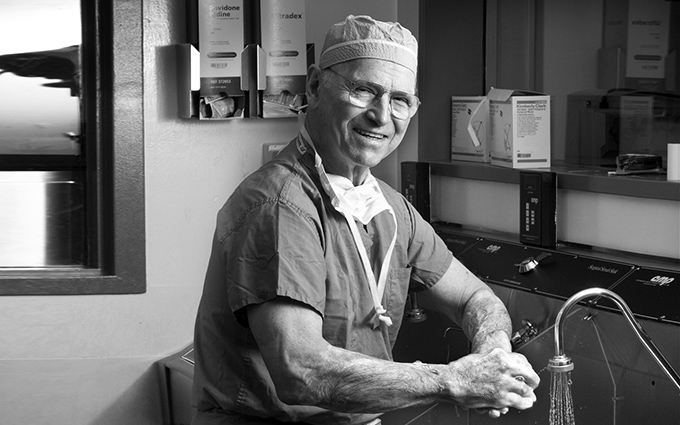
HSS Leads the Way in Treating Children with a Devastating Bone Disease
Imagine a young child with bones so fragile that simply standing up could cause leg bones to break. This disease is called osteogenesis imperfecta (OI), also known as “brittle bone disease,” a genetic disorder that can result in frequent fractures. Years ago, children with severe OI would be confined to a wheelchair for most of their lives.
HSS Opens First Osteogenesis Imperfecta Clinic in New York City
The late Dr. Leon Root, a renowned pediatric orthopedic surgeon at HSS, opened the first Osteogenesis Imperfecta Clinic in New York City in 1970 to help children with the rare condition. At that time, many of his youngest patients' bones were so fragile that they were carried to his office on a pillow.
Dr. Root had a big heart and a penchant for embracing the most difficult cases. He worked hard to improve the lives of OI patients and pioneered some of the earliest surgical treatments − special metal rods implanted into the long bones of children’s legs to make them less vulnerable to a fracture. As time went on, Dr. Root gained worldwide recognition as a leading expert in the care and treatment of patients with OI.
Extraordinary advances in treatment have made a world of difference for children born with osteogenesis imperfect since, and HSS has played a leading role in OI care and treatment.
“Telescoping Rods” that Grow with the Child
Over the last 15 or 20 years, a new generation of “telescoping” rods has come into use. “These rods grow along with the child, getting longer as the youngster’s bones grow,” explains Dr. Daniel Green, a pediatric orthopedic surgeon and OI expert at HSS. “This is a major advance, requiring fewer surgeries to replace the rods as the child gains height.”
In addition to adding strength and making a fracture less likely, the rods can fix a bone that isn’t straight. The procedure has enabled many children to walk for the first time. “Compared to 20 years ago, today children with OI can stand and walk and have more independence. They have a much better quality of life,” says Dr. Green, who has helped design the latest generation of rods. Custom-made for very small or very thin bones, the new rods allow Dr. Green and other specialists to help more patients.
Bone-Building Medications
In addition to surgery, newer bone-building medicines called bisphosphonates are helping young people with OI enjoy a better quality of life. “It’s really a combination of surgery and medication that has improved the opportunities for children with this disease,” says Dr. Green. “I’ve seen patients in their 40s or 50s with OI who, unfortunately, did not have these treatments available when they were children. They’ve spent most of their lives in a wheelchair.”
Dr. Cathleen Raggio, orthopedic director of the Alan C. and Kathryn O. Greenberg Center for Skeletal Dysplasias at HSS, provides medical care for OI patients from birth through adulthood. “They receive a holistic, multidisciplinary approach to their care,” says Dr. Raggio, who is also involved in a number of studies that aim to develop new treatments.
Team Approach to OI Care
A multidisciplinary approach to treating OI, pioneered by Dr. Root, remains the philosophy at Hospital for Special Surgery. The team approach includes orthopedic surgeons, radiologists, nurses, genetic counselors, physical therapists and occupational therapists. “One of our goals is to educate parents about the disease. We believe education is the key to empowerment,” says Dr. Green.
Carrying on the legacy of Dr. Root, HSS continues to be recognized for outstanding care. “The superb Osteogenesis Imperfecta Clinic at HSS provides people with OI the ability to receive expert care across their lifespan, enabling them to manage an extremely complex disorder with confidence in their medical team,” said Tracy Smith Hart, CEO of the Osteogenesis Imperfecta Foundation. “I can't overestimate the importance of such a clinic, it's so incredibly valuable to our community,"
“What sets HSS apart from other orthopedic centers is that we have all the resources patients and families need, ready to go on a daily basis,” Dr. Green says. “It’s one more way we fulfill our mission of providing outstanding care.”


